Abstract
The effects of eight different narrow band-emitting fluorescent lamps (371-750 nm) and four commercial broad band-emitting fluorescent sources upon growth and shoot initiation in tobacco callus (Nicotiana tabacum var. Wisconsin 38) have been characterized. Wavelength and intensity are equally important parameters in determining morphogenic changes. Near ultraviolet light (371 nm) was found to stimulate (0.024 mw/cm2) or inhibit (above 0.15 mw/cm2) callus growth and shoot initiation, depending on the light intensity. Stimulation of growth and shoot production occurs also in blue light region, but at higher intensity than in the near ultraviolet. Red and far red light (up to 1.7 mw/cm2) do not appear to affect callus growth or stimulate shoot initiation. The enhancement of callus growth and the stimulation of shoot initiation are controlled by the same near ultraviolet-absorbing photoreceptor system present in a small enough concentration that it cannot be recognized in the absorption spectrum of the intact tissue. Carotenoids, porphyrins, and phytochrome associated with the high irradiance response do not appear to qualify as the photoreceptor. Flavonoids are possible candidates. Radiation emitted by fluorescent lamps outside the near visible region was determined, and we concluded that energy levels were not sufficient to affect the reported results. The spectral output of several commercial lamps in the visible and near visible regions is such that there could be different effects on growth and development of tissue cultures.
Full text
PDF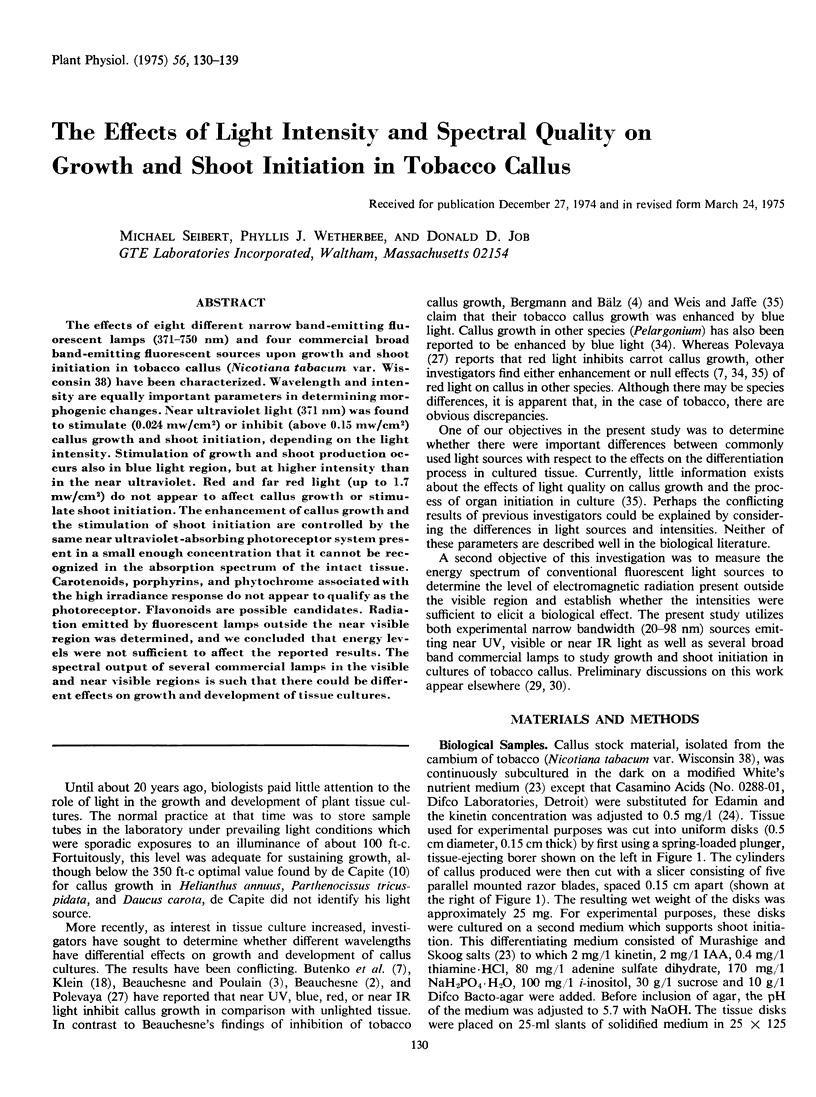
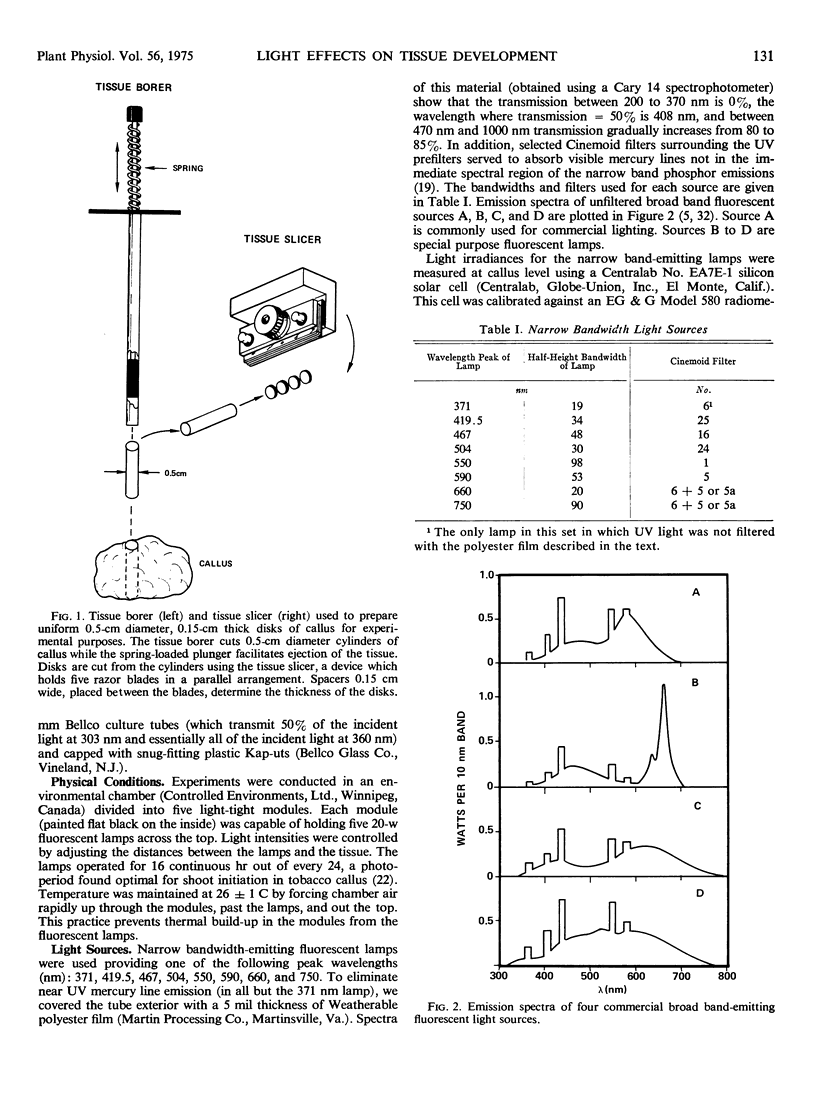
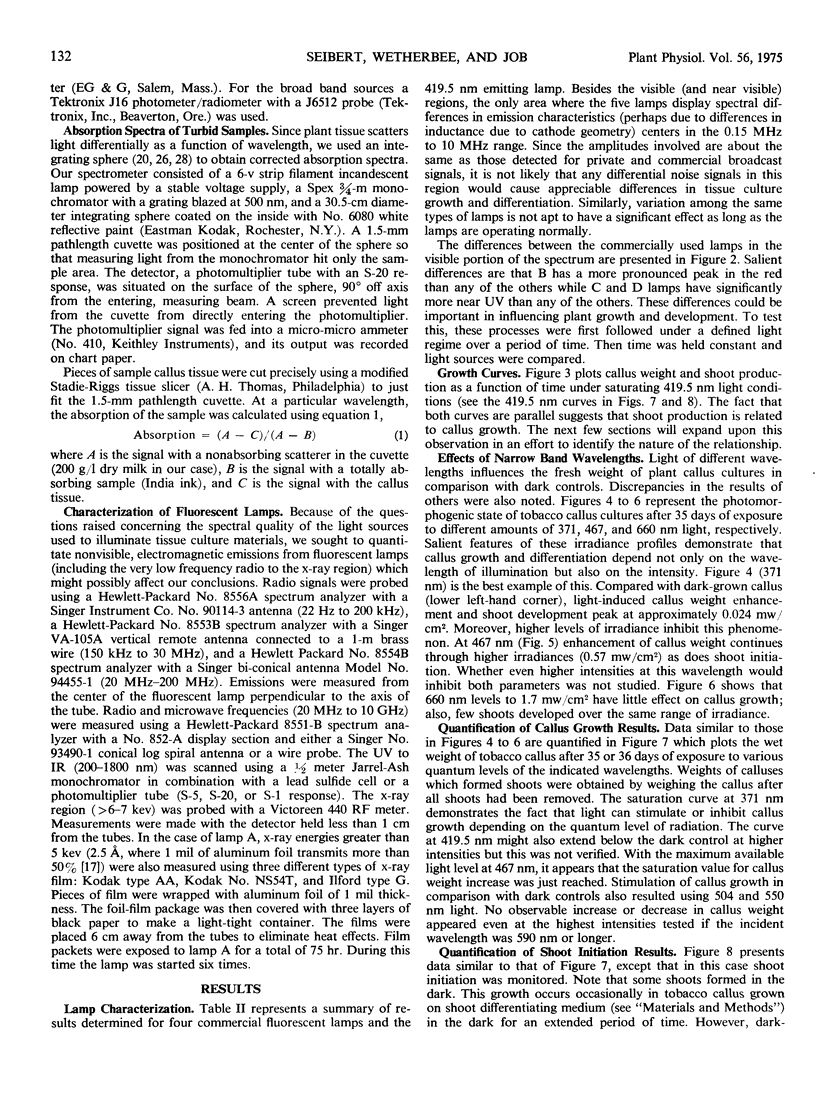
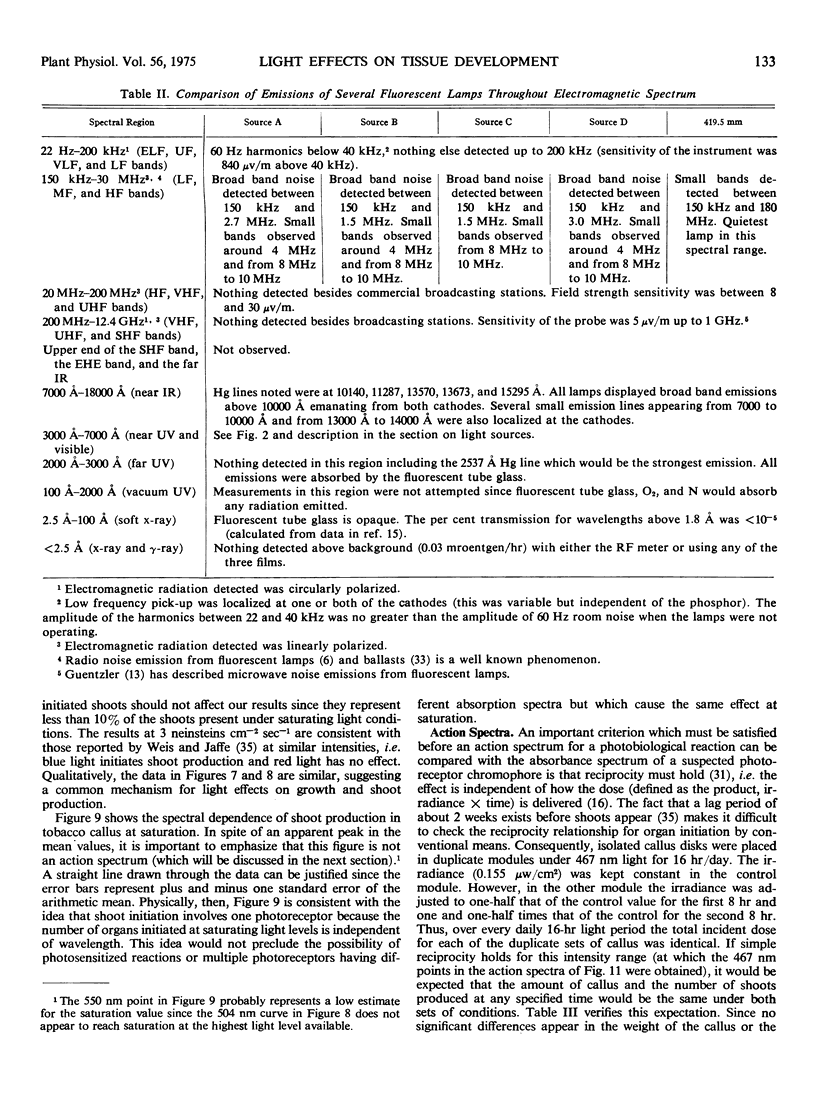

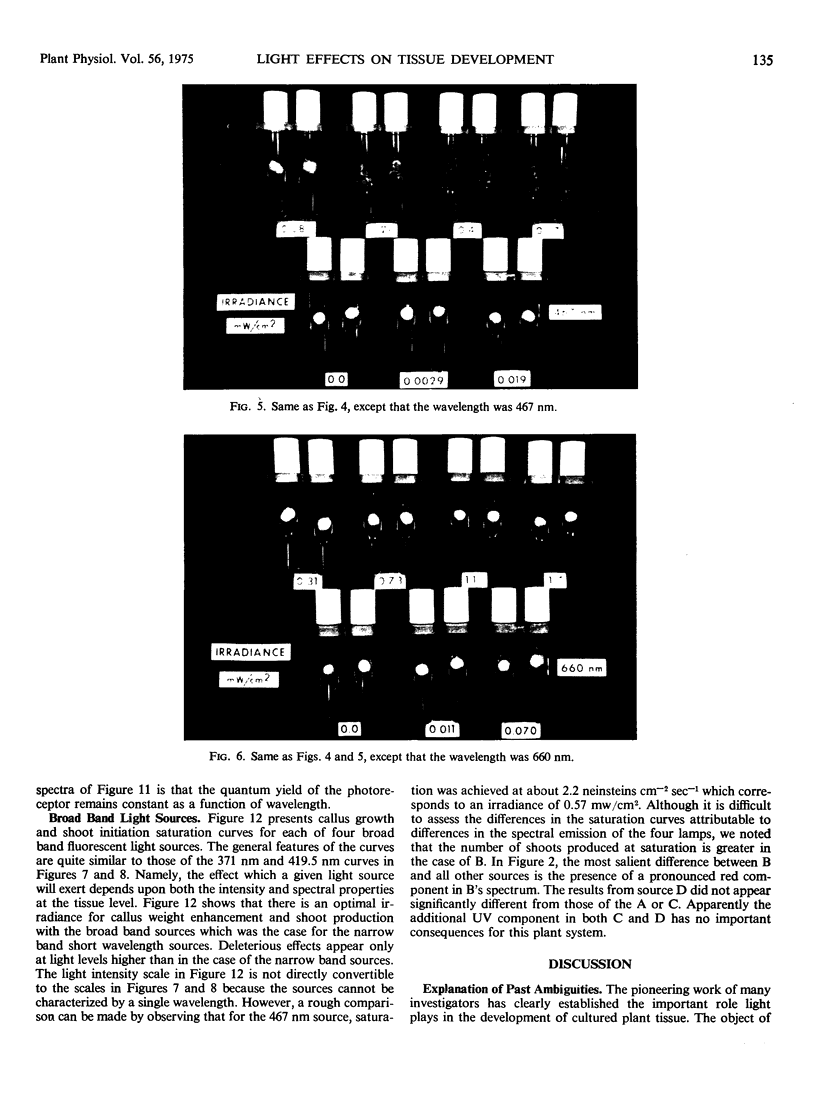
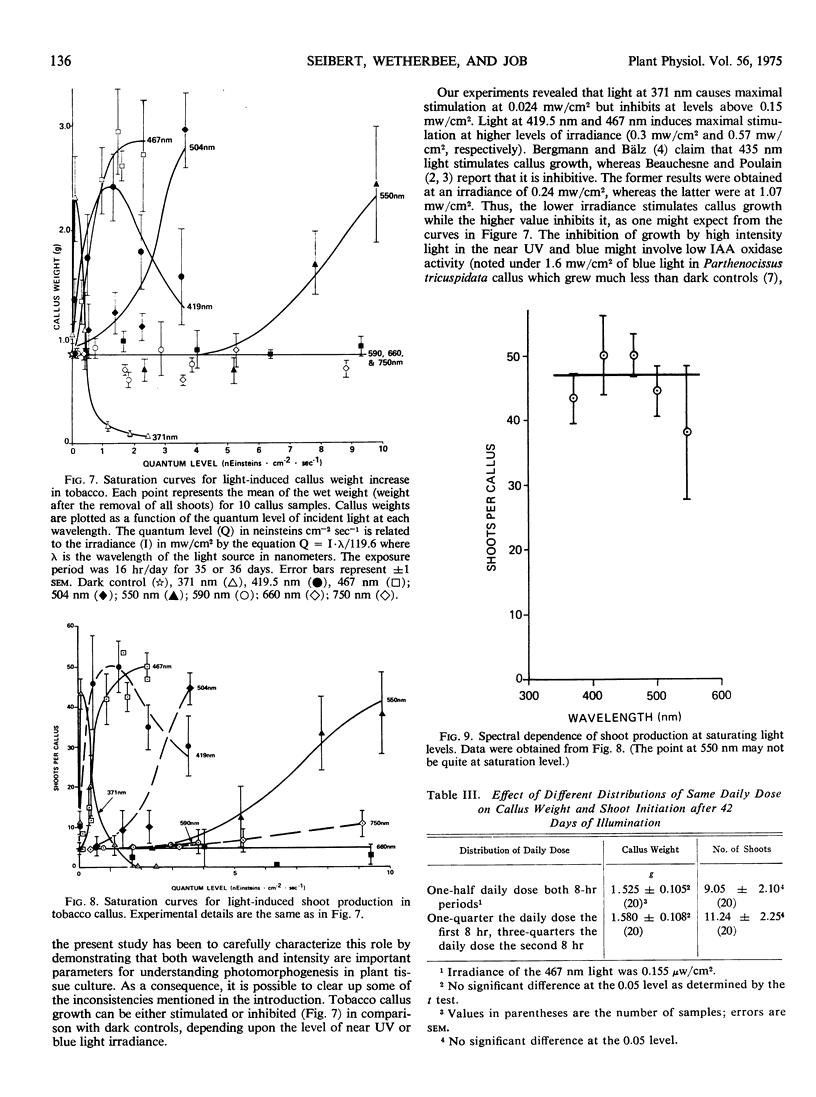
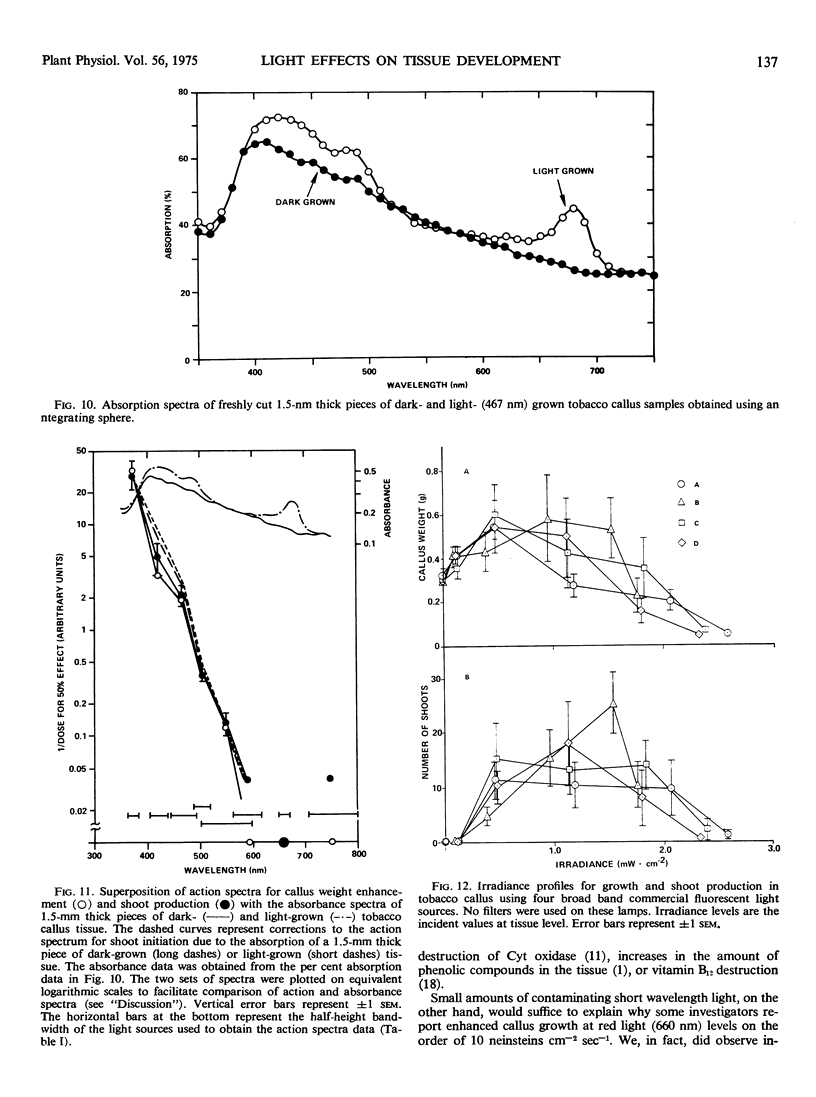
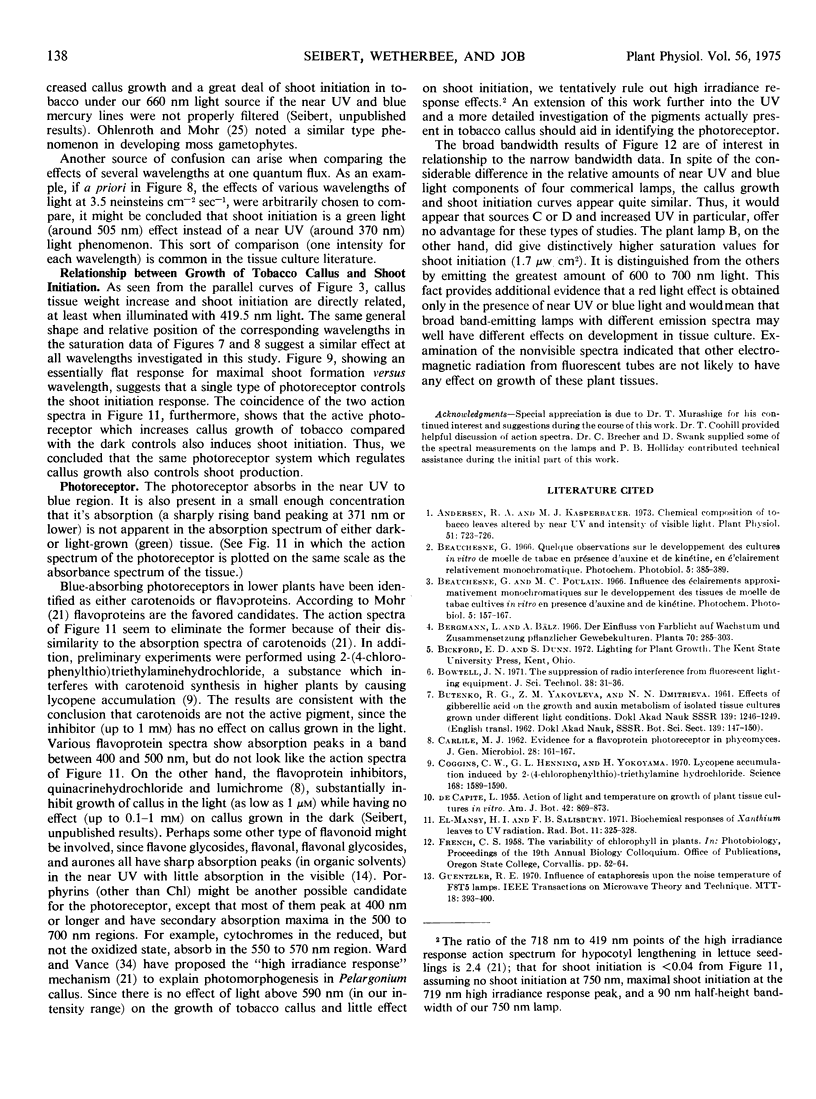

Images in this article
Selected References
These references are in PubMed. This may not be the complete list of references from this article.
- Andersen R., Kasperbauer M. J. Chemical composition of tobacco leaves altered by near-ultraviolet and intensity of visible light. Plant Physiol. 1973 Apr;51(4):723–726. doi: 10.1104/pp.51.4.723. [DOI] [PMC free article] [PubMed] [Google Scholar]
- Coggins C. W., Jr, Henning G. L., Yokoyama H. Lycopene accumulation induced by 2-(4-chlorophenylthio)-triethylamine hydrochloride. Science. 1970 Jun 26;168(3939):1589–1590. doi: 10.1126/science.168.3939.1589. [DOI] [PubMed] [Google Scholar]
- Klein R. M. An inexpensive filter system for photomorphogenetic research. Photochem Photobiol. 1965 Jun;4(3):625–627. doi: 10.1111/j.1751-1097.1965.tb09784.x. [DOI] [PubMed] [Google Scholar]
- Klein R. M. Repression of Tissue Culture Growth by Visible and Near Visible Radiation. Plant Physiol. 1964 Jul;39(4):536–539. doi: 10.1104/pp.39.4.536. [DOI] [PMC free article] [PubMed] [Google Scholar]
- OLSON J. M., CHANCE B. Oxidation-reduction reactions in the photosynthetic bacterium Chromatium. II. Dependence of light reactions on intensity of irradiation and quantum efficiency of cytochrome oxidation. Arch Biochem Biophys. 1960;88:40–53. doi: 10.1016/0003-9861(60)90194-6. [DOI] [PubMed] [Google Scholar]





